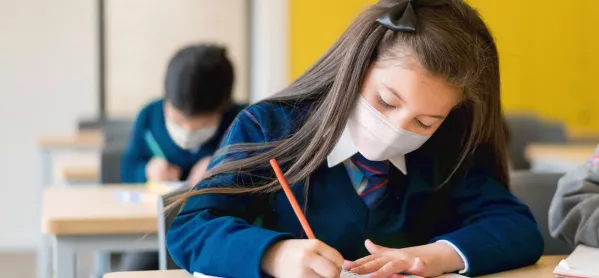Downing Street has said primary pupils should not be forced to wear face coverings after learning a council was encouraging their use.
The prime minister’s official spokesperson said that officials had been in contact with Redbridge Council in east London after it told primary schools under its control that pupils should be advised to wear masks.
The council’s Labour leader Jas Athwal said, “in some cases”, the authority had gone beyond the official advice.
Covid: Warning schools face ‘mask anarchy’ without rule change
Back to school: Masks required in secondary classrooms
Advice: How to ensure students wear their masks in classrooms
The PM’s spokesperson said: “Children in primary schools should not be asked to wear face coverings when they return to school on 8 March.
“Face coverings are only necessary for pupils in Year 7 and above.”
A Department for Education (DfE) spokesperson said: “Our guidance is clear: face coverings are only necessary for pupils in Year 7 and above and we are in contact with the council on the matter.”
Mr Athwal told the Daily Telegraph: “We have provided comprehensive advice to our schools.
“In some cases, where we have gone beyond the DfE advice, we have used the advice from Independent Sage.”
He added: “We have advised primary schools to encourage the use of face coverings indoors, as per the Independent Sage advice that pupils at both primary and secondary should be encouraged to wear a face covering indoors as one of a range of health and safety measures.”
Independent Sage is a group of scientists that has no official standing but has frequently taken a tougher stance on coronavirus control measures than the government.
Robert Halfon, the Tory chairman of the Commons’ education select committee, has warned that ministers risk creating “mask anarchy” unless regulations on face coverings in schools are made clearer.
He has called for “definitive regulations” to be put in place on whether students should wear face coverings.
The PM’s spokesman said: “We have set out why we are asking secondary school children to wear them, specifically that it is an extra piece of mitigation to try and help us ensure that we keep the transmission rate of the virus low.”




